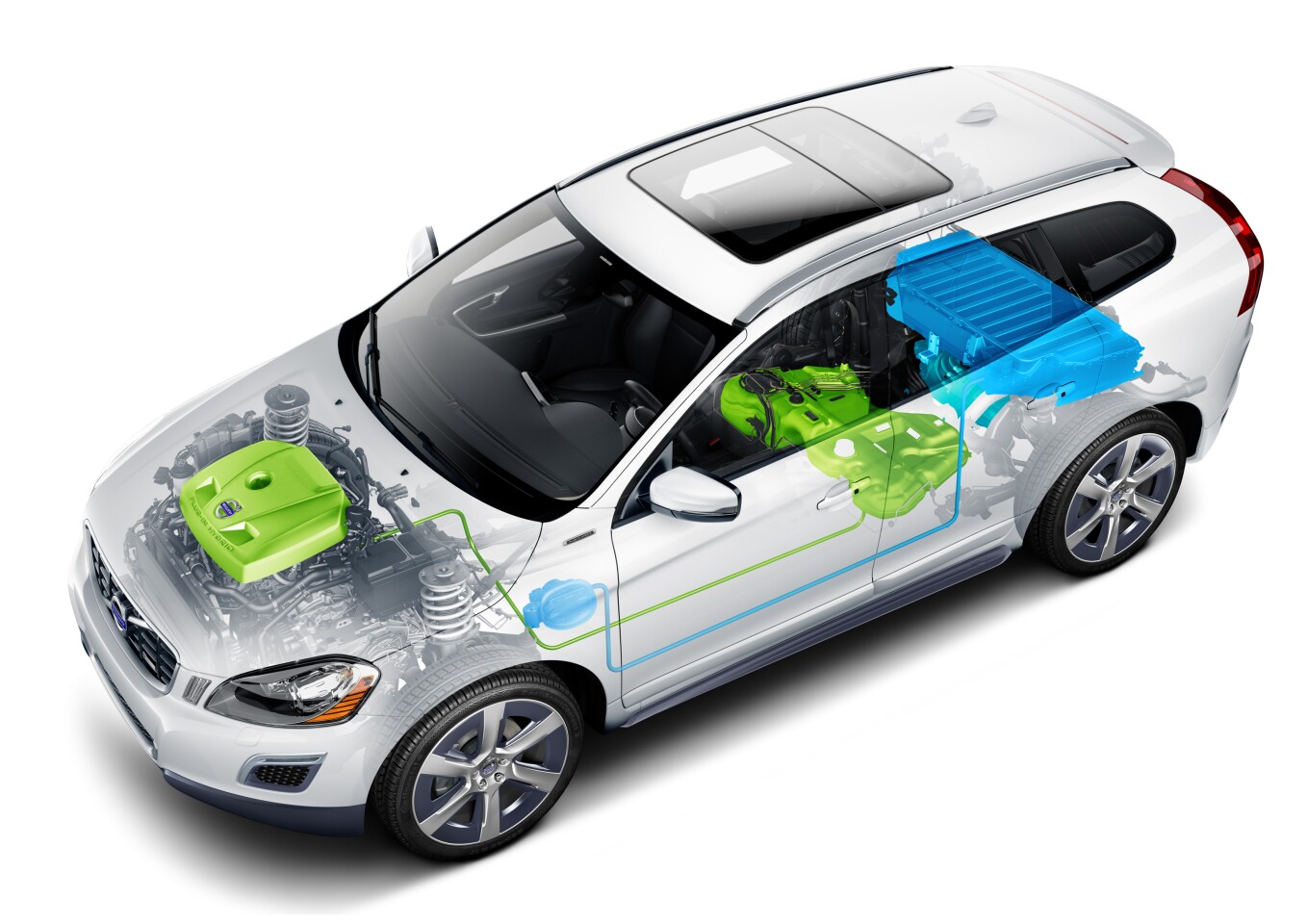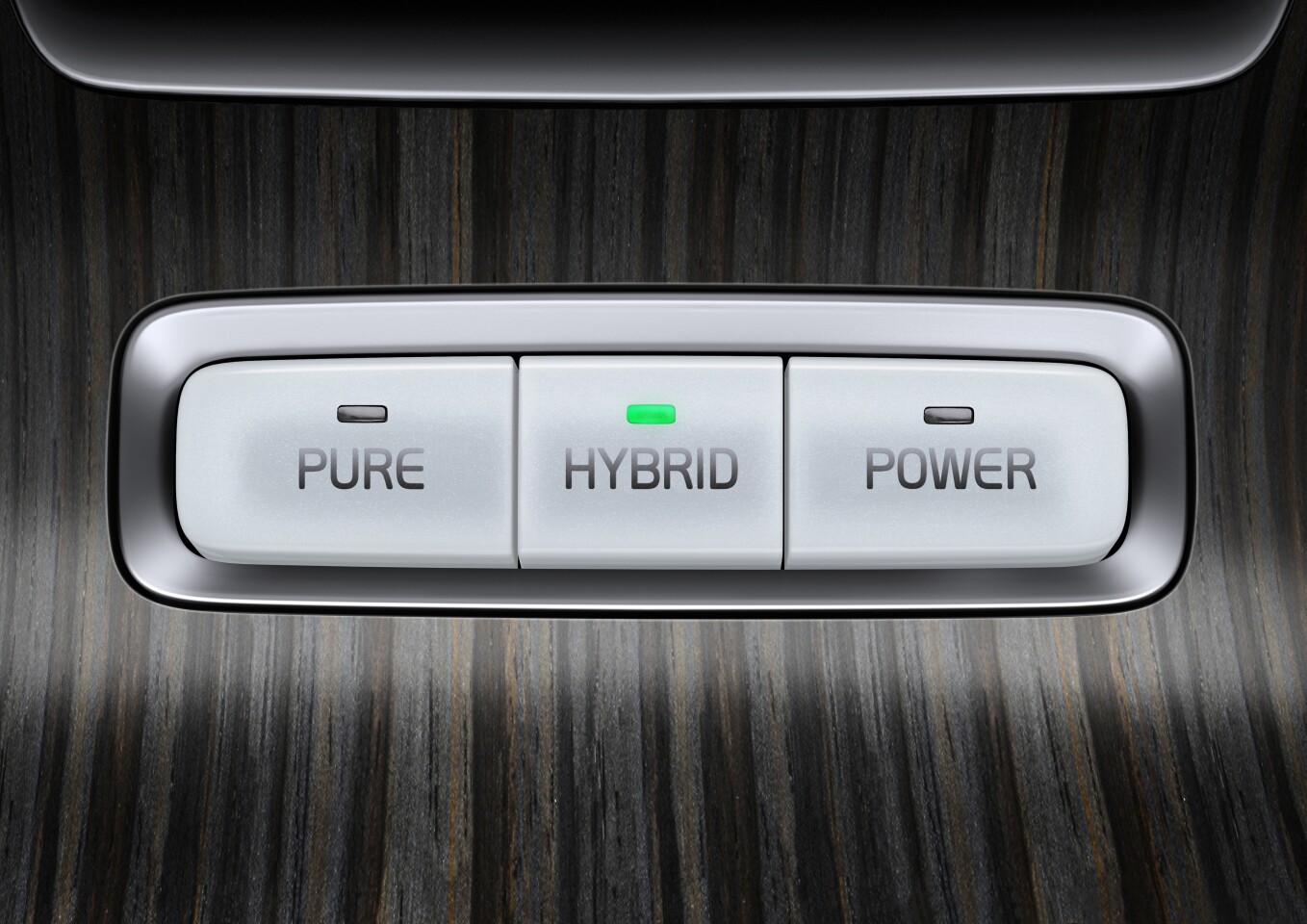The North American International Auto Show (NAIAS) 2012, which kicks off in Detroit next Monday, will see Volvo unveil its XC60 Plug-in Hybrid Concept car that it describes as "an electric car, a highly economical hybrid and a powerful high-performance car all rolled into one." At the press of a button, the XC60 Plug-in Hybrid Concept can switch between Pure electric mode, Hybrid mode, or Power mode, which combines the power of the 280 hp gasoline engine with the 70 hp electric motor to propel the car from zero to 60 mph (96.5 km/h) in 5.8 seconds.
The four-cylinder turbocharged gasoline engine generating 380 Nm (280 lb. ft) of torque that powers the vehicle's front wheels is from Volvo's upcoming Volvo Environmental Architecture (VEA) engine family. This is a modular range of diesel and gasoline engines that see a reduction in the number of unique parts resulting in a lighter engine that Volvo says is up to 35 percent more fuel efficient than similarly performing engines and which are also designed to accommodate future electrification technologies.

Power from the XC60 Plug-in Hybrid Concept's engine is delivered to the car's front wheels via a newly developed eight-speed automatic transmission with Volvo claiming its four-cylinder VEA engines will offer the same performance as today's six-cylinder engines, but with fuel consumption lower than current four-cylinder units.
Meanwhile, a 70 hp electric motor generating 200 Nm (148 lb. ft) of torque drives the vehicle's rear axle with power supplied from a 12 kWh lithium-ion battery pack located under the floor of the rear cargo compartment. Recharging via a 11V/12A outlet will take 7.5 hours, while a 22V/12A outlet will get the job done in 3.5 hours. While recharging, the passenger compartment can also be cooled or heated to save battery power when hitting the road.
Driving modes

In Pure mode, the car is powered solely by the electric motor "as much as possible" at a range of up to 35 miles (56 km) under the U.S. certification driving cycle, or 28 miles (45 km) according to the European certification driving cycle. In Hybrid mode, which is the default setting when the car is started up, the gasoline engine and electric motor work in tandem to provide a total operating range of up to 600 miles (960 km) with fuel economy figures of 2.3 l/100 km (102 US mpg) and CO2 emissions of 53 g/km under the NEDC driving cycle, or 50 mpg (4.7 l/100 km) combined fuel economy in continuous driving under the U.S. certification standard.
If get up and go is more important than fuel economy then Power mode combines the power from the gasoline engine with that from the electric motor, whose instant torque delivery contributes to the car's acceleration performance of 0-62 mph (100 km/h) in 6.1 seconds.
Instead of a conventional starter motor or alternator, the XC60 Plug-in Hybrid Concept features an Integrated Starter motor and Generator (ISG) connected to the crankshaft that can deliver an extra 34 kW (45 hp) during acceleration and also charges the battery during braking. There's also a Save feature that allows battery power to be saved for later and will see the generator topping up the battery if necessary to provide sufficient power for about 12 miles (20 km) of electric-powered driving.

Rather than a conventional four-wheel drive system that transfers power to all wheels mechanically, the XC60 Plug-in Hybrid Concept features an electric four-wheel drive system that sees power distributed between the gasoline-driven front wheels and the electrically driven rear axle via a central control unit when AWD mode is activated.
While Volvo will unveil the XC60 Plug-in Hybrid Concept with its VEA engine in Detroit next week, Volvo President and CEO, Stefan Jacoby said, "this world-class gasoline plug-in hybrid technology, featuring a state-of-the-art four-cylinder engine from our upcoming Volvo Environmental Architecture engine family, will reach our American showrooms in a couple of years. However, it is too early to say which model will be the first to feature this solution."





















